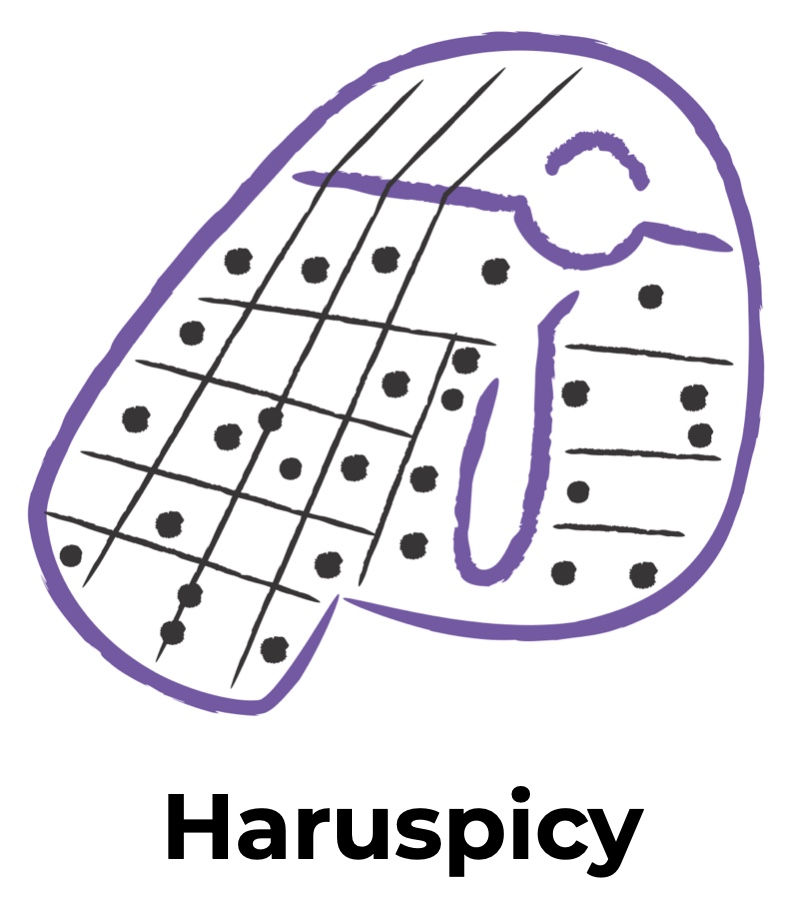Egyptian Statue
How to seek a prediction: Seek out a priest, or wait for one to arrive, likely by boat
(Sample) Equipment: special statue, possibly with movable head for “nodding”
Personnel: Priest trained in decreeing oracles

Oracles appear relatively late in the long span of Egyptian history. The first representations of a sacred boat containing an oracular statue of the god Amun date to the early New Kingdom (reign of Amenhotep I, around 1525 BCE). While there are some earlier textual references, neither the Old Kingdom (Pyramid Age, around 2686–2181 BCE), nor the Middle Kingdom (age of great Egyptian literature, around 2055–1650 BCE), seem to place much reliance on decrees from oracles. It is the New Kingdom, and the following Third Intermediate Period (about 1069–664 BCE) and Late Period (about 664–332 BCE) where we find the most frequent mention of oracular decisions, both royal and “private.”
There was no single god responsible for all oracular decrees. The Egyptians appealed to many forms of the god Amun, Amun-Re, and other deities, state and local; even the deified king Amenhotep I was consulted by many residents of Thebes. Throughout Egyptian history we see an ebb-and-flow in perceptions of the divine nature of the pharaoh. At times the populace relied upon the king and the pharaonic court system, at other times direct appeals to the god(s) for assistance were far more common. Methods included approaching the statue of the god, borne in his sacred bark upon the shoulders of priests, during festival processions. Or, people could submit “yay or nay” inscriptions to the deity for a definitive decision; the bark or statue would walk forwards (yes) or backwards (no). Some scholars believe that “nodding” indicated that certain statutes had moving parts, manipulated by the priests, making this a potentially very #human-influenced divination system. As far as selecting the next pharaoh was concerned, both Thutmose III and Ramesses IV separately recounted how the god Amun perused the hall at Karnak Temple, Thebes, in his bark, before settling in front of the chosen prince before all the courtiers.
Oracular decisions came down on matters both large and small. In the case of royalty, the god might bestow his blessings on the legitimacy of pharaoh, or the decision to mount a military campaign or the best route for a trade expedition. For the elites and common people, advice was sought on whether goods and services had been adequately paid for, whether a promotion was likely, or if a neighbor had encroached upon one’s farmland, after the waters of the annual Nile flood had obscured the field boundaries.
Since the king was the one responsible for ordering the inscription of oracular decisions on temple walls or papyrus documents, it is extremely unlikely he would ever have recorded a decision that went against him. Perhaps the closest we come to a decision running counter to pharaoh’s preferences is the magical tale of “King Khufu and the Magicians” (Papyrus Westcar), written during the Middle Kingdom. The last part of the text seems to foretell the end of Khufu’s line (Fourth Dynasty, Old Kingdom), and the rise of new kings who would form the Fifth Dynasty. Upon hearing this news, the king “fell into sadness of heart.”
Egyptian Statue Animation:
Meet The Expert: Professor Peter Der Manuelian
The Diviner's Guide expert on Egyptian divination is Professor Peter Der Manuelian of the Department of Near Eastern Languages & Civilizations at Harvard University. Professor Manuelian is the Philip J. King Professor of Egyptology and also the director of the Harvard Semitic Museum. He is also the founding director of The Giza Archives, which aims to collect all information (including detailed, 3D representations) about digs and excavations at Giza, the home of pyramids.
Additional Resources:

















